Monographs 2019
Inequalities and Conflicts in Modern and Contemporary History of Africa: A Comparative Perspective
Jan Záhořík

The book deals with multiple causes of inequalities and conflicts in Africa. The rise of Marxism, socialism, and ethno-nationalism has been traditionally explained as a reaction to Western colonialism. This, however, does not apply to Ethiopia which had no history fo long-lasting European colonialism. The monograph thus takes multiple perspectives into account in order to find answers on the root causes of socio-political troubles and turbulences in Africa.
Year of publication: 2019
Publisher: Lexington Books Lanham
ISBN: 978-1-4985-3641-7
Karl Popper a vědecká (i)racionalita
Ondřej Bíba
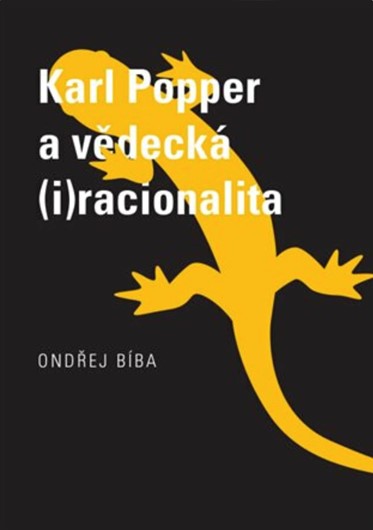
This monograph deals with Popper's philosophy of science and specifically with the solution of the problem of induction in the framework of the tradition of critical rationalism. The text introduces inductive inference and establishes the difference between Hume's negative "solution" of the problem of induction and Popper's positive solution. Popper refuses induction, but unlike Hume, he finds a non-destructive way for philosophy and especially science. His key opponents are represented by the approaches of J. Worrall and W. Salmon. This is followed by modification of Popper's solution by David Miller. The conclusion of the work leaves Popper's and Miller's own solutions and deals with his students - A. Musgrave, W. W. Bartley and J. Agassi - who decided to modify the original Popper base and bring a solution to the problem of induction that would stand against critical reservations. Then the author proposes his own solution.
Year of publication: 2019
Publisher: Vydavatelství ZČU
ISBN: 978-80-261-0893-1
North Korea's Foreign Policy: The DPRK's Part on the International Scene and Its Audiences
Lenka Caisová
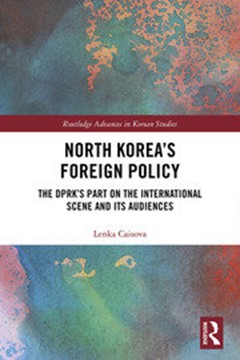
This book analyses North Korean foreign policy since 1994, aiming to better understand the part the DPRK plays in international politics. Pyongyang is the country’s capital and largest city. To the north and northwest, the country is bordered by China and by Russia along the Amnok and Tumen rivers; it is bordered to the south by South Korea, with the heavily fortified Korean Demilitarized Zone separating the two. Nevertheless, North Korea, like its southern counterpart, claims to be the legitimate government of the entire peninsula and adjacent islands. Both North Korea and South Korea became members of the UN in 1991. Applying the role theoretical approach to North Korea for the first time, this book charts the continuities and changes in North Korean foreign policy, drawing on content analysis of North Korean periodicals. It begins with an identification of roles, before analysing the relationship between these roles and foreign policy in practice. In particular, it examines the links between role shifts and changes in interaction with the U.S. and South Korea. This book also demonstrates that the existence of pressure, sanctions and confrontations have contributed to a confrontational, isolationist and inward-looking foreign policy. Therefore, it argues, one should be aware that if the DPRK is constantly treated as if it is a nuclear state – and even a rogue state – it is much easier for it to enact a role on the international stage which reflects this. As a study of the foreign policy of the world’s most controversial and secretive country, this book will be invaluable to students and scholars of Korean politics and international relations, as well as Asian Studies more generally.
Year of publication: 2019
Publisher: Abingdon and New York Routledge
ISBN: 978-1-138-49343-8
Tiglatpilesar III., král veškerenstva
Kateřina Šašková

Tiglath-pileser III (745–727 BCE) was one of the most significant rulers of the first half of the 1st millennia BCE, and - in many aspects - he was the real founder of the Neo-Assyrian Empire. The study analyzes the background of his accession to the throne, his military campaigns, the contemporary royal and state ideology, Assyrian state administration and the provincial and vassal system, and the economic and social aspects of Tiglath-pileser’s military campaigns.
Year of publication: 2019
Publisher: Vydavatelství ZČU
ISBN: 978-80-261-0830-6
Metternich a německá otázka v letech 1840-1848
Barbora Pásztorová
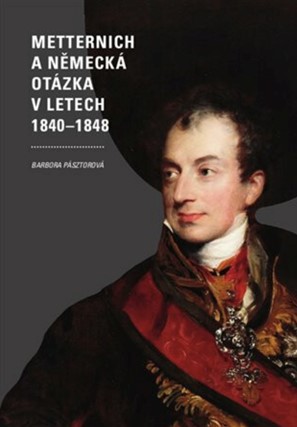
The aim of this monograph is the analysis of Austrian Chancellor Metternich's attitude to the German question between 1840 and 1848. The period under review is logically defined by two significant events, the Rhine Crisis in 1840 which stimulated the development in Germany with the negative impact on Metternich's influence in the German confederation, and the March Revolution in 1848 which led to his fall and at the same time the important changes started in Central Europe. In the course of less than nine years Metternich lost his control under German opposition movements, including the national one, and also the unequivocal support of his most important ally in German area, Prussia, which during the reign of Frederick William IV began to implement its own policy less depended on Austria. The aim of this monograph is also to find out why Metternich started to lose his influence on political events in the German Confederation in the 1840s.All his life Metternich led the campaign against nationalism, liberalism and democracy. At least in Central Europe defended the monarchist principle from republicanism, suppressed all attempts to arouse a revolution and opposed political unification of Germany and Italy. It is not surprising that especially the liberal historians from the second half of the nineteenth century saw Metternich as a reactionary, an enemy of freedom and a representative of the policy of retention who did not understand powers of modernization that time. One of the aims of this thesis is, therefore, an attempt to reassess this traditional black-and-white perception of Metternich's German policy, which according to the latest findings of researchers is unsustainable, especially by foreign scholars.
Year of publication: 2019
Publisher: Vydavatelství ZČU
ISBN: 978-80-261-0831-3
S nadějí za oceán. Soupeření lodních společností o zákazníky v habsburské monarchii na přelomu 19. a 20. století
Martin Boček
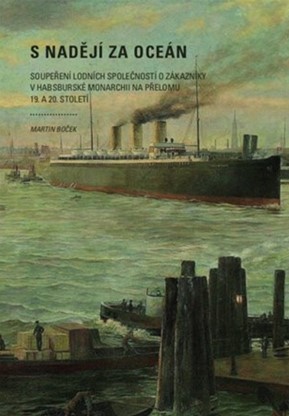
The goal of presented book is competitive analysis of shipping companies for customers in the Habsburg Monarchy. At the same time there is a possibility to compare chosen shipping companies and their attitude to customers in the Habsburg Monarchy. The thesis primarily deals with operation of shipping companies in the Habsburg Monarchy and it also provides insight into the phenomenon of emigration from the Austro-Hungarian Empire during the mass migration to the USA. Author of this book chose one austrian company, one british company and two biggest German shippings for comparison.
Year of publication: 2019
Publisher: Vydavatelství ZČU
ISBN: 978-80-261-0843-6
Břežany. Kapitoly ze starších dějin obce
Jan Lhoták
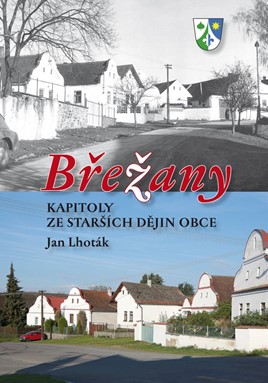
The submitted monograph focuses on the history of the village of Břežany in south-west Bohemia, and specifically on selected chapters in its early history. The foreword by the mayor is followed by a short introductory passage giving a brief list of previously published books or other materials on the history of the village, a rather short list with only one small publication issued solely about Břežany by Zdeňka Řezníčková, Břežany. Střípky z dějin obce pod Slavníkem (2012). The book contains ten main chapters (Location and Nature of Village, Estate of Horažďovice and its Operation, Břežany Population, Relationship between Peasants and Lords, Village, Livelihood, Religious Life, School, Inheritance Practices, Březany Topography to 1870). The first of these places Břežany within its natural environment and cultural landscape. Břežany’s closest surroundings are modelled through two key dominating features of the landscape – the hill Slavník and a group of fishponds, with the village’s position at the foot of Slavník likely influencing its very name – the village is spread out across the south side of the slope – or at the “břeh”, which is the old Czech term for a hill or slope. Břežany itself is a village reservation zone, and with nearby Dobršín forms the notional western tip of the South Bohemian style of brick house known as Rural Baroque (selské baroko). Although Břežany was not insignificant in size, it is likely that since it was founded it was a part of a larger feudal unit and never became the seat of the lord’s residence. Thus the history of Břežany necessarily overlaps with the closest large such seat – Malý Bor, although it would seem that Břežany was not an integral part of the Malý Bor estate from the beginning. The village enters written history in 1320, but we have very little information about it over the subsequent centuries. In 1515, Břežany is first mentioned expressly as being the property of the House of Švihovský of Rýzmberk, in whose property it remained until the post-White Mountain period. In 1622, the Horažďovice estate was sold to Adam of Šternberk, while the Šternberk era (to 1719) was followed by rapid changes in owner, with Horažďovice remaining in the possession of the House of Kinsky from 1834 to the end of the period it was administered by the nobility. In the second chapter, the author looks at the administration of the Horažďovice estate its management by the lords, which incorporated brewing, fishing, farming, milling and forestry. In the next section, the author’s attention turns to the population of Břežany. Until the mid-19th century, data on numbers of buildings and the population come up against the limits of censuses and statistics at the time, however in 1677, for example, Břežany comprised 144 people of adult age. In 1814, 492 Catholics and 4 Jews lived there, and in 1826 the total population was 578 making Břežany the second most populous village in the Horažďovice estate. In 1853, the population reached a historic maximum of 761 people. The number of houses grew too – from the oldest list giving 27 rural farmsteads (1547) through 52 residential buildings in 1770 to 92 houses in 1846. In the chapter on the population, the author also focuses on Břežany disasters, the social classes of the population (peasants, cottage-dwellers, landless, itinerants), and also mentions marginalised groups and people (beggars, Jews, “fallen women”). The author subsequently looks at the relationship between the Břežany population and its lords, looks in detail at the affairs of their payment obligations towards the lords, corvée and contributions (taxes), with attention also focused on conflicts between the tenants and the lord. The chapter Village then looks at the municipal system, in which the owner of the farmhouses played a central role, responsible for administering the village land and village governance. The Vogt was a mediator between the village and the lord, this position documented in Břežany at the end of the 17th century. The character of Březany village would not be complete without village employees, who included the village herdsman, blacksmith and gamekeeper. The next section focuses on livelihood of the Břežany population, looking, for example, at the quality and properties of the soil (generally unsuitable for more demanding cereals; more suitable for growing potatoes), and also including a clear table laying out the number of cattle raised in peasants’ farms. The subject of the next chapter is the religious life of the Břežany population, looking at the local priests, parish benefice, church funds and religious buildings. Brežany did not have a parish church, and so citizens visited the Church of St Mary Magdalene in Malý Bor. The Malý Bor parish underwent quite a complex development – it was a conglomerate comprised of a number of mediaeval parishes, the oldest of which was the parish at the church of St Clement in Prácheň. In this part of the book, attention is also paid to two local chapels, of which the listed Baroque chapel consecrated to St Anna has an interesting history – it stands near the village in a wood, with a well and a protected lime tree in its vicinity. The parish also provided a basic education to village children (see the subsequent School chapter), with teachers recorded in Malý Bor records from 1670. The school in Břežany was founded at the end of the 19th century. After an excursion into the issue of inheritance rights and their application using specific local examples (the principal source a preserved set of land books), it is the turn of the largest chapter comprising most of the text of the book – Břežany Topography to 1870. This section is based on a detailed excerpt from the Malý Bor and Hradešice registry offices, the farmhouse books of the Horažďovice estate and selected sources of region-wide nature (desky zemské, or Land tables, cadastral registries). The headers comprise the known names of farmhouses ordered chronologically according to period of use, followed by a basic historical assessment of the construction, a summary of owners from records, a list of people present in the building according to the libri status animarum (or “soul descriptions”) of 1836 and finally the history of the building itself. Thus the older history of around a hundred Břežany buildings is described in detail. The monograph comes with extensive notes, a summary in English, a list of tables, a list of images, a list of abbreviations used and a list of sources and bibliography.
Year of publication: 2019
Publisher: Vydavatelství ZČU
ISBN: 978-80-261-0865-8
Koupit knihu
The British Legation in Prague. Perception of Czech-German Relations in Czechoslovakia between 1933 and 1938
Lukáš Novotný
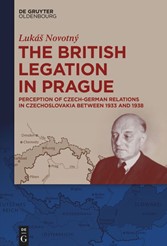
This book analyses the issue of Czech-German relations within Czechoslovakia between 1933 and 1938. Following Adolf Hitler´s accession to the office of Chancellor, the German minority in Czechoslovakia began to progressively mobilise and gradually radicalise such that the majority of them supported the Sudeten German Party in the 1935 elections and played a large part in the end of the First Czechoslovak Republic three years later.
Year of publication: 2019
Publisher: Berlin and Boston De Gruyter
ISBN: 978-3-11-064711-2
Arény předků. Posvátno a rituály na počátku eneolitu
Petr Krištuf; Jan Turek; Martin Gojda; Klement Rejšek; Ladislav Rytíř; Ondřej Švejcar; Valerie Vranová
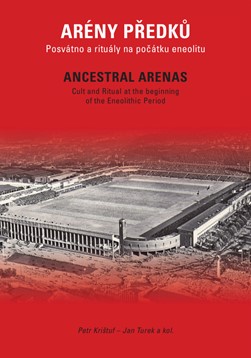
The Causewayed enclosures phenomenon has been in the focus of European archaeology since the beginning of the last century. These monuments are amongst the characteristic manifestations of European agricultural prehistory. Since the beginning of the interest in these monuments, there has been extensive discussion of the interpretation of their purpose. The spectrum of hypothetical interpretations of the purpose of these enclosures is very wide. It ranges from their interpretation as strategic military fortifications, fortification of residential areas, through places of exchange and markets to sanctuaries with funerary function and worship of ancestral cult. Although unambiguous interpretation of these structures seems to be rather complicated, we believe that targeted research using a wide range of modern archaeological and natural science methods can at least in a general outline reveal the ways of construction and decline of individual enclosures, as well as the intensity and nature of their use and thereby contribute to the interpretation of their importance to prehistoric society. Moreover, currently the evidence of such enclosures is growing significantly, mainly due to the application of methods of systematic remote sensing of the landscape, which has been developing in the Czech Republic since the early 1990s. Applying this method of prospection has brought a completely new type of archaeological evidence in this respect. In 2015, we launched the project “Proto-Eneolithic ditch enclosures in Bohemia: Interpretation of their purpose and social importance” (GA15-02453S). In the framework of the project, three causewayed enclosures were examined, which we can now securely date to the Proto-Eneolithic Period. These are Chleby (Nymburk District), Kly (Mělník District) and Vrbno (Mělník District). The research in these sites focused on their chronology, way of construction, traces of use, development and decline of the enclosure. Due to the complex nature of the questions that required archaeological as well as pedological and pedochemical procedures, an interdisciplinary research team was created, the core of which was staff of the Department of Archeology of the University of West Bohemia in Pilsen and the Faculty of Forestry and Wood Technology of Mendel University in Brno. The main objective of the project was therefore to interpret the purpose of causewayed enclosures for the Eneolithic society. The basic question was whether these constructions served as places of religious rituals, funerary practices, worship of ancestral cult, and the extent of sacred and profane activities. Bearing in mind that ritual enclosures are just one form of manifestation of the ritual practices of the Proto-Eneolithic communities, in this book we also pay attention to other evidence of social and spiritual ceremonies. It is primarily a question of the nature of the burial rites and the treatment of the ancestors’ remains. This is related to the use of enclosures and the creation of long barrows as specialized funerary features. Given the indications of the presence of bovine skulls (bucrania) and finds of complete pottery vessels within enclosed areas, we also pay attention to the importance of cattle breeding and bull worship in agricultural communities drinking ceremonies in Eneolithic societies. We will also focus on the nature of Eneolithic ceremonial warfare that was probably also associated with causewayed enclosures.
Year of publication: 2019
Publisher: Vydavatelství ZČU
ISBN: 978-80-261-0851-1
Obraz vědy ve filosofii 20. století
Nikolaj Demjančuk
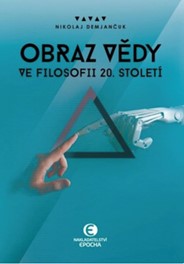
The publication deals with the analysis of the nature of science in the philosophical concepts of the last century. The author argues that the dynamics of culture influences the position of science, shifts in its social roles, structure (language, logic, methodology), the life of the scientific community. The transformation of the cultural space, which includes science, creates numerous images of science. The author compares several influential approaches and models (neo-kantianism, phenomenology, logical empirism, critical rationalism) with the intent to show its interconnectedness and complementary nature. The study justifies the richness of scientific rationality undermining and legitimizing the plurality of her images. The author analyzes and presents some of them. The author of the monograph presents some of the results of his research over the last decade.
Year of publication: 2019
Publisher: Nakladatelství Epocha Praha
ISBN: 978-80-7557-231-8
Kosmologie Hebrejské bible a starověké židovské tradice
Věra Tydlitátová

Cosmology of the Hebrew Bible and exegetical tradition are not at the center of research. It is not complicated, complex and systematic as the cosmology of Mesopotamia, Greece and Alexandria. Jewish scholars adopted the scientific knowledge of neighboring cultural circles. In the Jewish texts, we can find only a few references to the nature of the universe, the earth, and the world, and moreover, they are poetic or mythological statements and not scientific theories. Greek philosophers from the 6th century BC formulated hypotheses and defined terms, writers of the Tanach and other works told the stories. At the heart of Jewish authors is God, man, and their mutual relationship expressed in terms of the Covenant. Despite this Israeli cosmology is interesting. The special category of Jewish cosmological thinking are pseudoepigraphic writings, especially the Books of Enoch. The physical and spiritual character of the cosmic phenomena merges into each other in them. Jewish anthropology is expressed here in the character of Enoch transformed into the Angel of Metatron. We find detailed and very colorful speculations about the structure of heaven and its inhabitants Jews were not allowed to think of celestial bodies as Gods, therefore they could talk freely about them. Discussions recorded in the Talmud are informal, based on associations and metaphors, often provocative, yet just in the Talmud, we find, for example, the first known record about the periodic return of the comet. Man is the image of God in the Jewish tradition, on the one hand man is just dust, on the other hand one of the people rules over angels. The soul of man is full of evil, but man is also a friend of God. The history of mankind begins with a fratricide, but the universe stands on the human justice. Just as we do not find a complete image of the cosmos, we can not find a definitive definition of man. Complex religious-philosophical speculations are balanced by a very sober, even ironic appraisal of the daily struggles of mortals. The basis of Jewish thinking about heaven and earth is the emphasis on God and man, precisely on the question of what should one do? How to live in the world? And the result of many such open-minded, playful conversations is the emphasis on fulfilling the mitzvot, a set of Halakha laws, the sense of which is the ethical concept of tikkun ha-olam. This emphasis is universal, because although the mitzvot fulfillment applies only to the Jewish community, the remedy of the world, which is its purpose, applies to all people, the whole earth, and even the cosmos.
Year of publication: 2019
Publisher: Vydavatelství ZČU
ISBN: 978-80-261-0868-9
Úspěšné ženy ve stínu slavných mužů. Příběhy pěti žen, které ovlivnily podobu sociologického výzkumu
Hynek Jeřábek
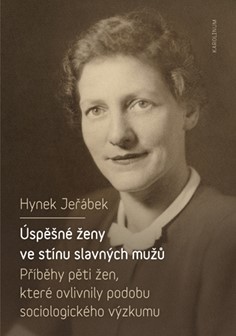
The book presents the stories of the scientific research conducted by five extraordinary women in the 20th century. All of the contributed to the development of empirical social research and research methodology. Marie Jahoda, Herta Herzog, Elisabeth Noelle-Neumann, and, before them, Florence Kelley and Vivian Marie Palmer were very successful in their research professions. The monograph focuses on a group of women who have been unfairly overlooked, and who created their work in the shadow of famous men. All the fame tended to be assigned to the male theorists, but without the creative work of these women, their innovations, new methods and approaches, and without their selfless commitment at the right time many famous sociological works that are so famous today would never have come into existence.
Year of publication: 2019
Publisher: Univerzita Karlova Praha
ISBN: 978-80-246-4382-3
Rudí barbaři před branami. První opiová válka 1839-1842
Aleš Skřivan; Aleš Skřivan
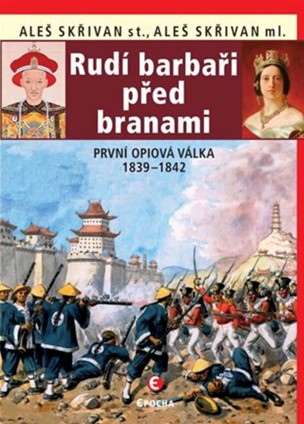
The Anglo-Chinese armed conflict; Britain imported tea from China and exported opium to China, which was very much opposed by the Chinese authorities. Other chapters are devoted to unleashing as well as land and sea battles of the war itself. The conflict ended an agreement in Nanjing in 1842 that allowed Britain to acquire Hong Kong. The work also includes a chronological overview of the most important events.
Year of publication: 2019
Publisher: Nakladatelství Epocha Praha
ISBN: 978-80-7557-210-3
Od krevní msty k postsocialismu: vývoj antropologického zájmu o Balkán
Lenka Jakoubková Budilová
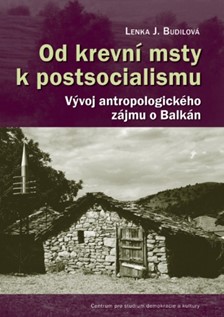
The book traces anthropological interest in the Balkans -- from early research by South Slavic backers to post-war investigations of urbanization and collectivization to the study of post-socialism or communist nostalgia. The author focuses on what questions anthropologists dealing with the Balkans asked, how the Balkans were constructed in anthropological imagination, and how research in the Balkans contributed to the development of anthropological theory. At the same time, they are trying to answer the question of how the anthropological approach differs from local research traditions and how anthropology contributed to the knowledge of the Balkans. Many of the phenomena and institutions that have been described in the Balkans have become part of wider anthropological knowledge. These include the transhumante pastoral of the Karakachan or Vlach, the spiritual kinship (couture) in Serbia and Bulgaria, the blood feud described in northern Albania and Montenegro at the beginning of the 20th century, and the concept of honour and shame analysed in the Mediterranean region. The Balkans was also one of the areas where the return of "home" anthropology was realized. It was research in the Balkans that contributed to discussions about the possibilities of Anthropology Europe, on field research in its own society, or on the anthropological exploration of modern complex societies in general. All of these topics are addressed in the book by the author, including on the basis of her own field research.
Year of publication: 2019
Publisher: Centrum pro studium demokracie a kultury Praha
ISBN: 978-80-7325-490-2